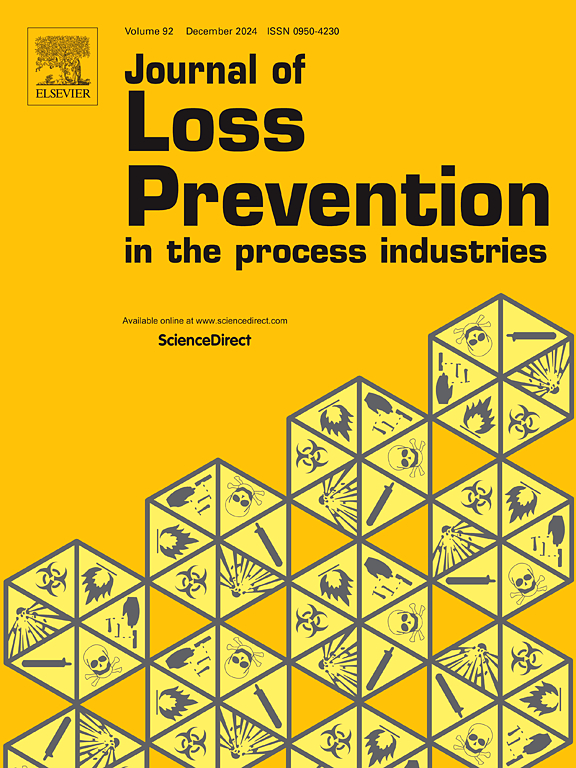Testing ignition of hybrid mixtures by brush discharges
IF 3.6
3区 工程技术
Q2 ENGINEERING, CHEMICAL
Journal of Loss Prevention in The Process Industries
Pub Date : 2025-01-25
DOI:10.1016/j.jlp.2025.105565
引用次数: 0
Abstract
Brush discharges are recognized for their inability to ignite combustible dust mixtures when combined with air. However, they possess the potential to ignite flammable gas mixtures. Experiments conducted thus far have reached a maximum equivalent energy level of 4 mJ. The question now arises, at what composition can hybrid mixtures of dust and gas be ignited by brush discharges? In the case of gases alone, the transferred ignition charges are like those, used to determine the minimum ignition energy. Given that even small admixtures of gases significantly reduce the minimum ignition energy of dust, it is plausible that brush discharge may exhibit a similar effect. In this study, experiments are presented which serve to develop an ignition apparatus in which direct ignition tests are carried out on hybrid mixtures with brush discharge. To achieve this, a charging/discharging mechanism and appropriate measurement techniques were established based on a high voltage source and back charging of the insulating plate. Additionally, the hybrid mixtures will be calibrated based on their Minimum Ignition Energy (MIE), which will be measured using a modified MIKE 3 apparatus. Furthermore, the mechanism of dust dispersion will be investigated, as low turbulence is advantageous for achieving minimum ignition energy values. For this purpose, the whirling up as well as dropping of dust will be compared. An optical analysis system was set up and tested for this purpose.
求助全文
约1分钟内获得全文
求助全文
来源期刊
CiteScore
7.20
自引率
14.30%
发文量
226
审稿时长
52 days
期刊介绍:
The broad scope of the journal is process safety. Process safety is defined as the prevention and mitigation of process-related injuries and damage arising from process incidents involving fire, explosion and toxic release. Such undesired events occur in the process industries during the use, storage, manufacture, handling, and transportation of highly hazardous chemicals.

 求助内容:
求助内容: 应助结果提醒方式:
应助结果提醒方式:


